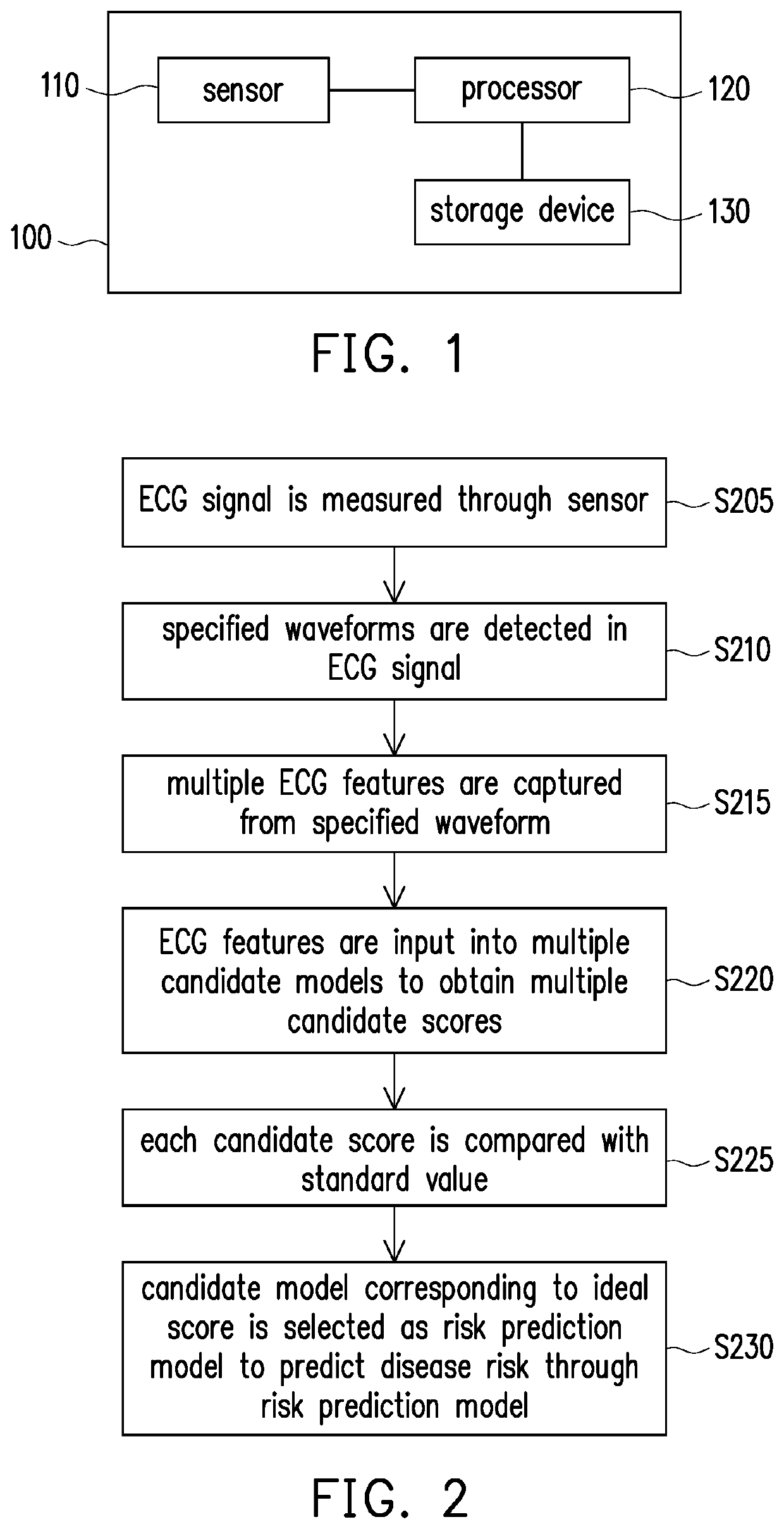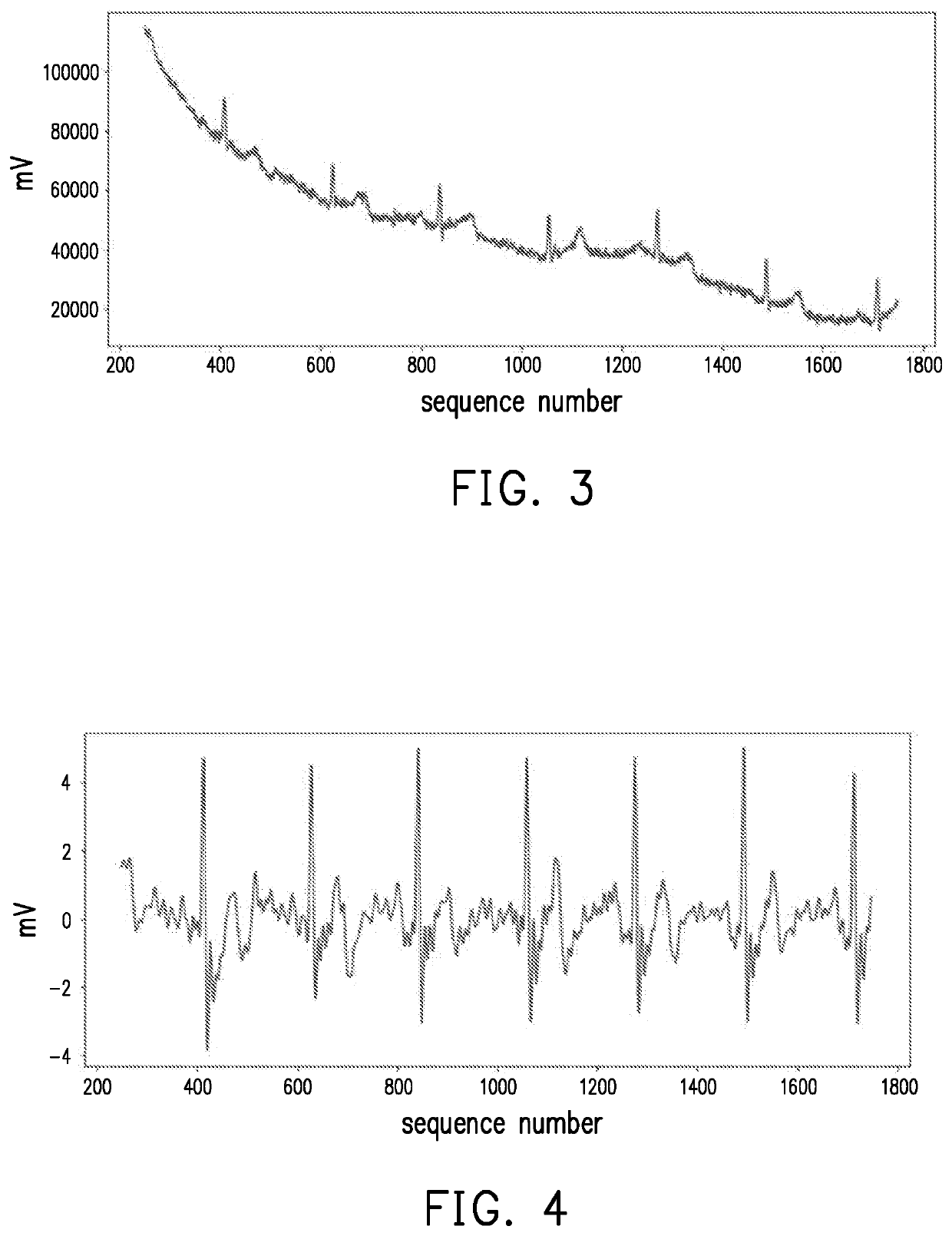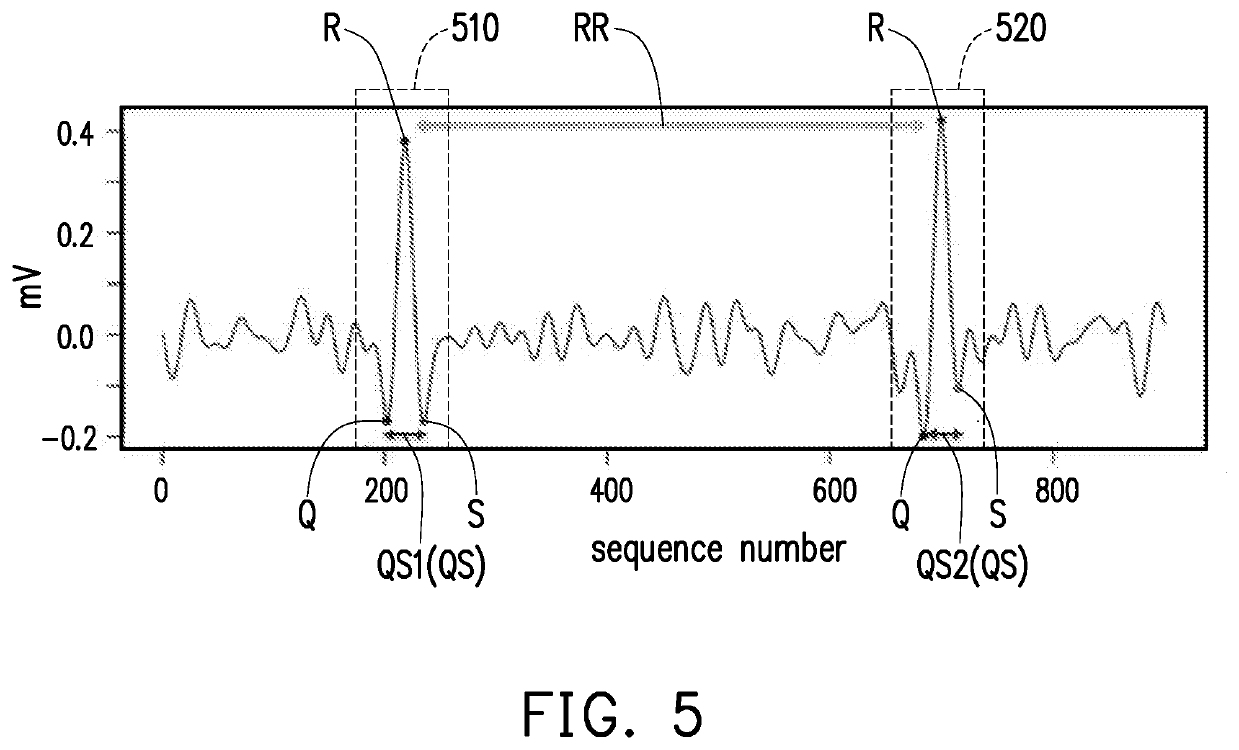Method for analyzing electrocardiography signal
a technology of electrocardiography and signal analysis, applied in the field of disease prediction methods, can solve the problems of reducing unable to be immediately measured, and unable to obtain the risk factors of the condition inside the body using certain invasive methods, so as to save the time taken for people to go to the hospital for examination
- Summary
- Abstract
- Description
- Claims
- Application Information
AI Technical Summary
Benefits of technology
Problems solved by technology
Method used
Image
Examples
Embodiment Construction
[0025]FIG. 1 is a block diagram of an electronic device according to an embodiment of the disclosure. Referring to FIG. 1, an electronic device 100 includes a sensor 110, a processor 120, and a storage device 130. The processor 120 is coupled to the sensor 110 and the storage device 130. Here, the electronic device 100 may be a wearable device and the sensor 110 is, for example, an electrocardiography (ECG) instrument. The user wears the electronic device 100 on the body for the sensor 110 to measure the position of an ECG signal.
[0026]The processor 120 is, for example, a central processing unit (CPU), a physics processing unit (PPU), a programmable microprocessor, an embedded control chip, a digital signal processor (DSP), an application specific integrated circuits (ASIC), or other similar devices.
[0027]The storage device 130 is, for example, any type of fixed or removable random access memory (RAM), read-only memory (ROM), flash memory, hard disk, other similar devices, or a comb...
PUM
 Login to View More
Login to View More Abstract
Description
Claims
Application Information
 Login to View More
Login to View More - R&D
- Intellectual Property
- Life Sciences
- Materials
- Tech Scout
- Unparalleled Data Quality
- Higher Quality Content
- 60% Fewer Hallucinations
Browse by: Latest US Patents, China's latest patents, Technical Efficacy Thesaurus, Application Domain, Technology Topic, Popular Technical Reports.
© 2025 PatSnap. All rights reserved.Legal|Privacy policy|Modern Slavery Act Transparency Statement|Sitemap|About US| Contact US: help@patsnap.com



